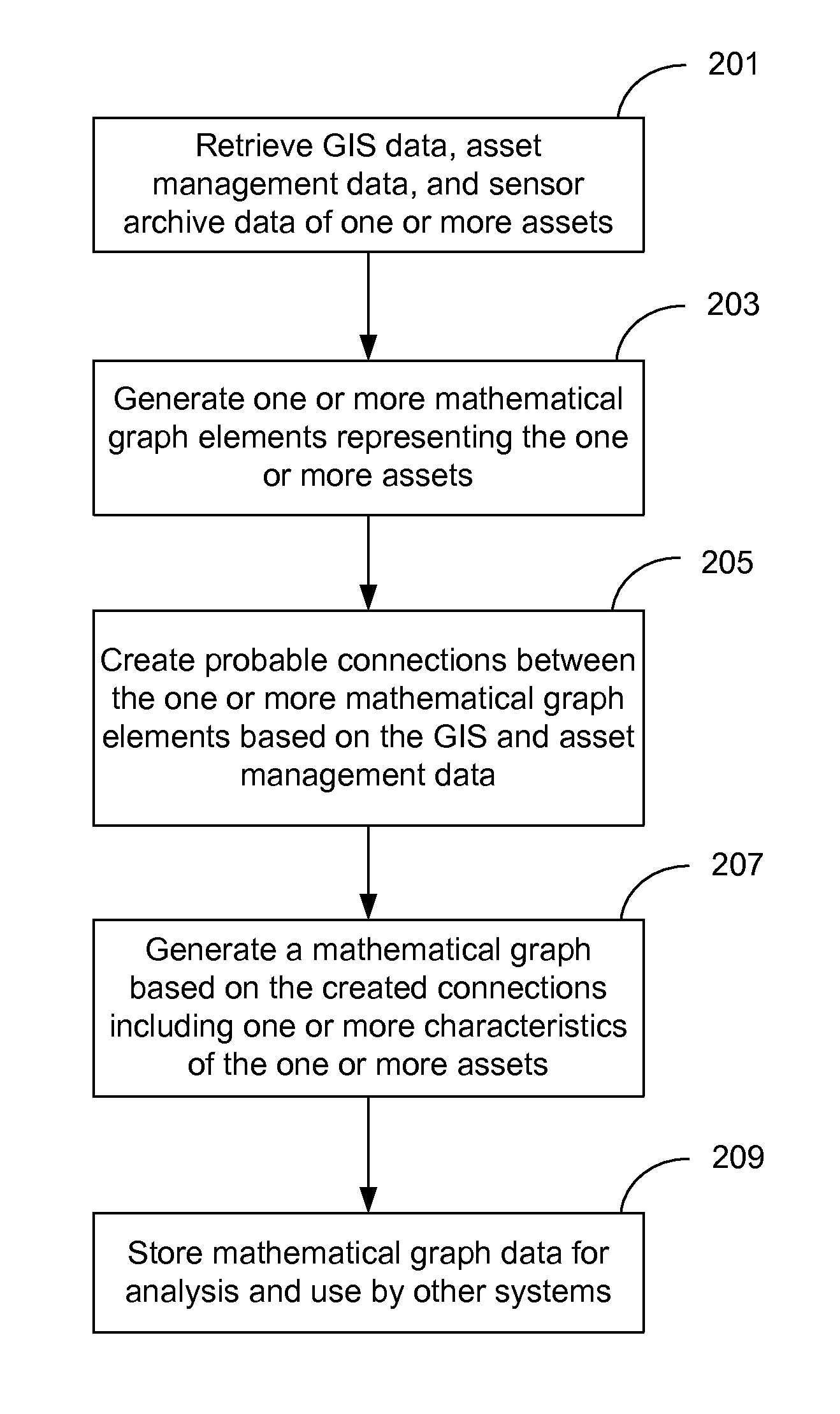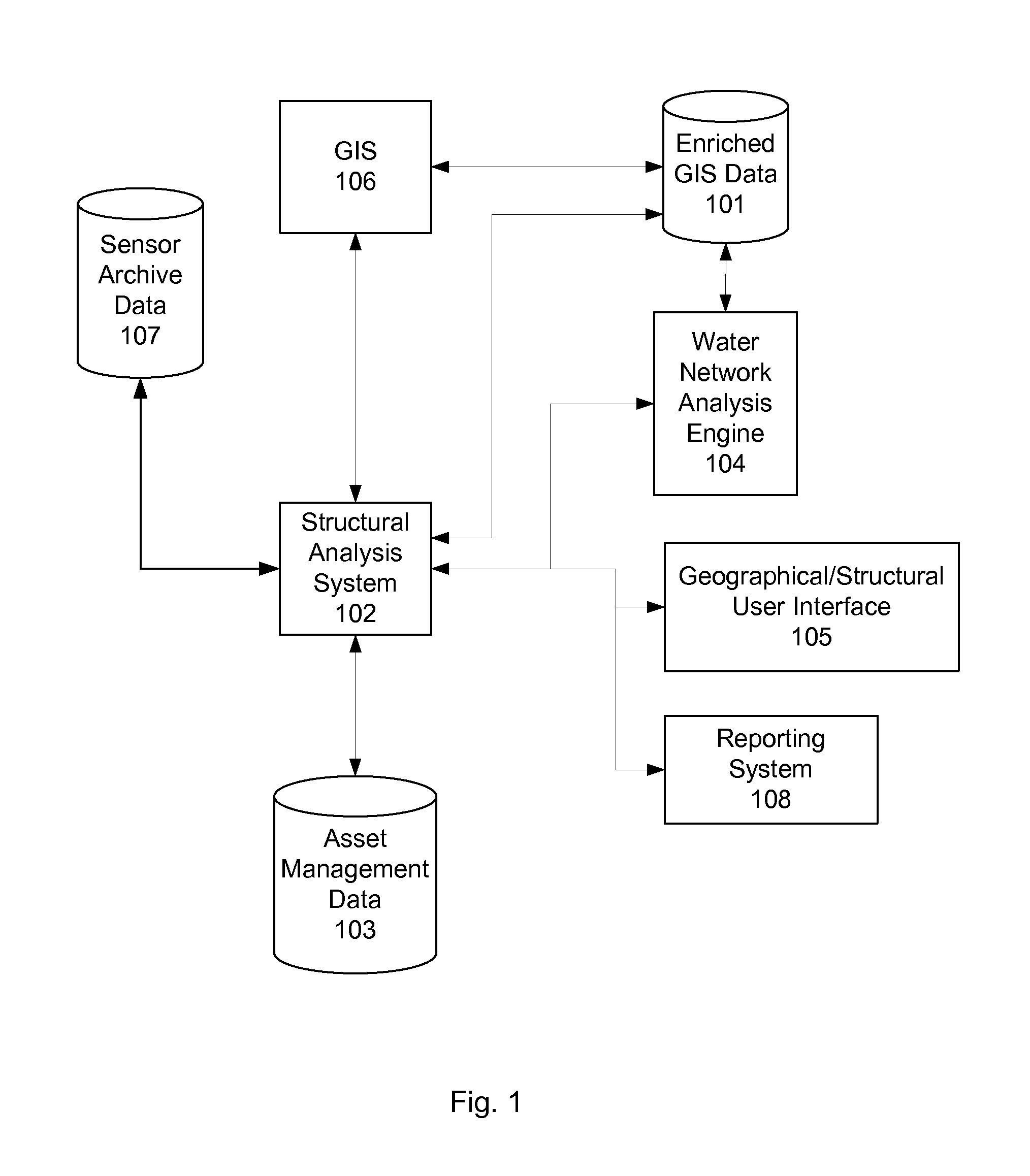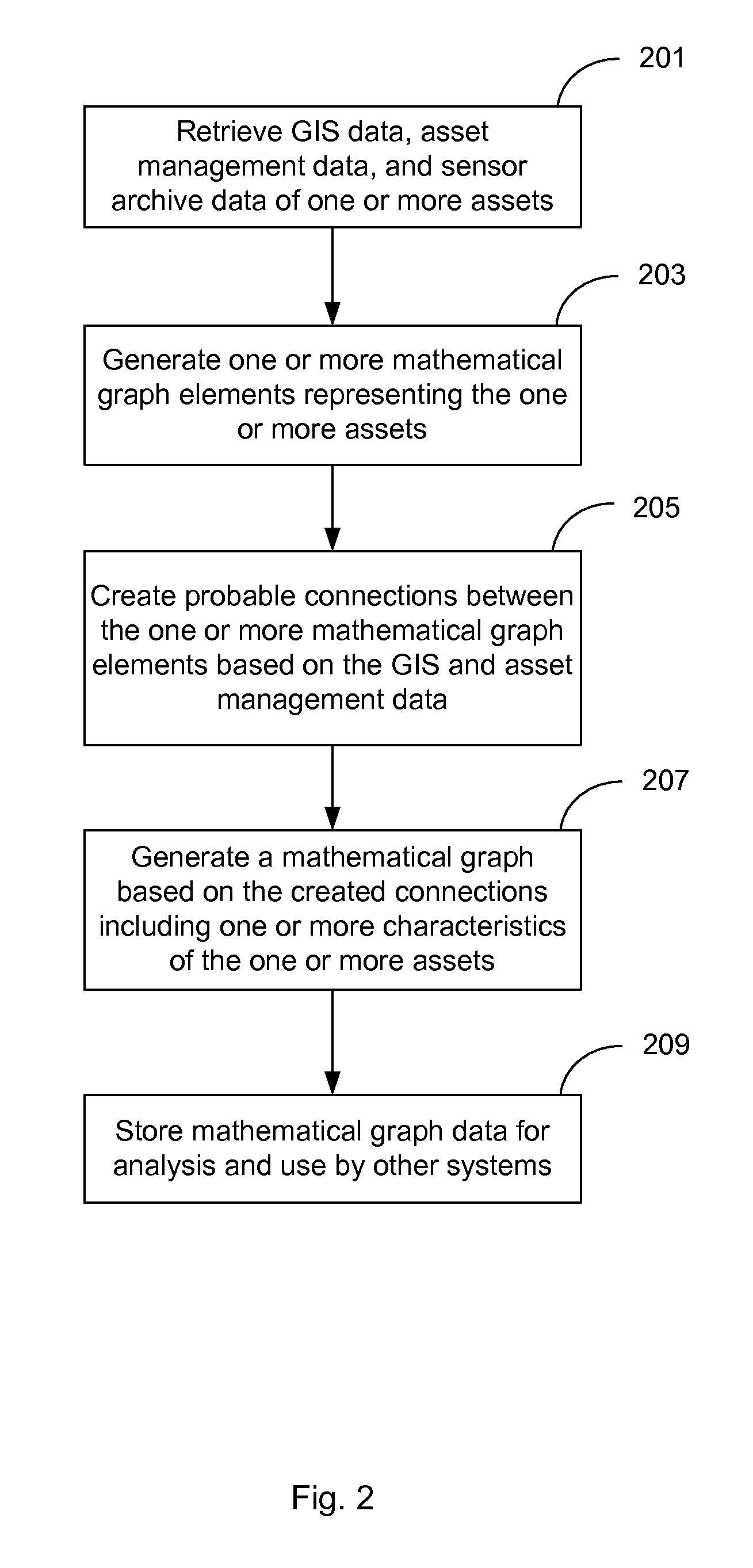System and method for analyzing gis data to improve operation and monitoring of water distribution networks
a technology of gis data and system, applied in the field of monitoring and operating resource distribution networks, can solve the problems of increasing water scarcity, ineffective use of gis and asset data in current systems monitoring utility networks, and increasing water scarcity
- Summary
- Abstract
- Description
- Claims
- Application Information
AI Technical Summary
Benefits of technology
Problems solved by technology
Method used
Image
Examples
Embodiment Construction
[0024]In the following description of the embodiments of the invention, reference is made to the accompanying drawings that form a part hereof, and in which is shown by way of illustration, exemplary embodiments in which the invention may be practiced. It is to be understood that other embodiments may be utilized and structural changes may be made without departing from the scope of the present invention.
[0025]FIG. 1 presents a block diagram illustrating one embodiment of a system for analyzing and monitoring assets and their geographical layout in a water distribution system. As shown in FIG. 1, the system includes a structural analysis system 102 operable to retrieve data from several sources including asset management database 103, geographic information system (GIS) 106, and sensor archive database 107, to analyze the retrieved data in accordance with processes described herein, and to output the resulting data to enriched GIS database 101. The enriched GIS data 101 can then be ...
PUM
 Login to View More
Login to View More Abstract
Description
Claims
Application Information
 Login to View More
Login to View More - R&D
- Intellectual Property
- Life Sciences
- Materials
- Tech Scout
- Unparalleled Data Quality
- Higher Quality Content
- 60% Fewer Hallucinations
Browse by: Latest US Patents, China's latest patents, Technical Efficacy Thesaurus, Application Domain, Technology Topic, Popular Technical Reports.
© 2025 PatSnap. All rights reserved.Legal|Privacy policy|Modern Slavery Act Transparency Statement|Sitemap|About US| Contact US: help@patsnap.com



